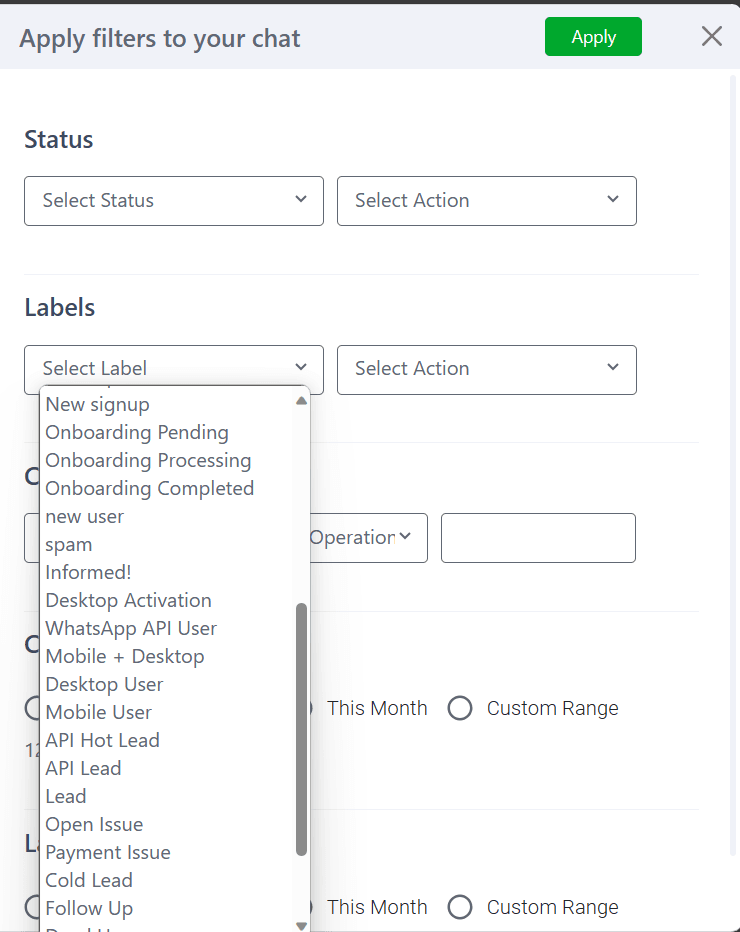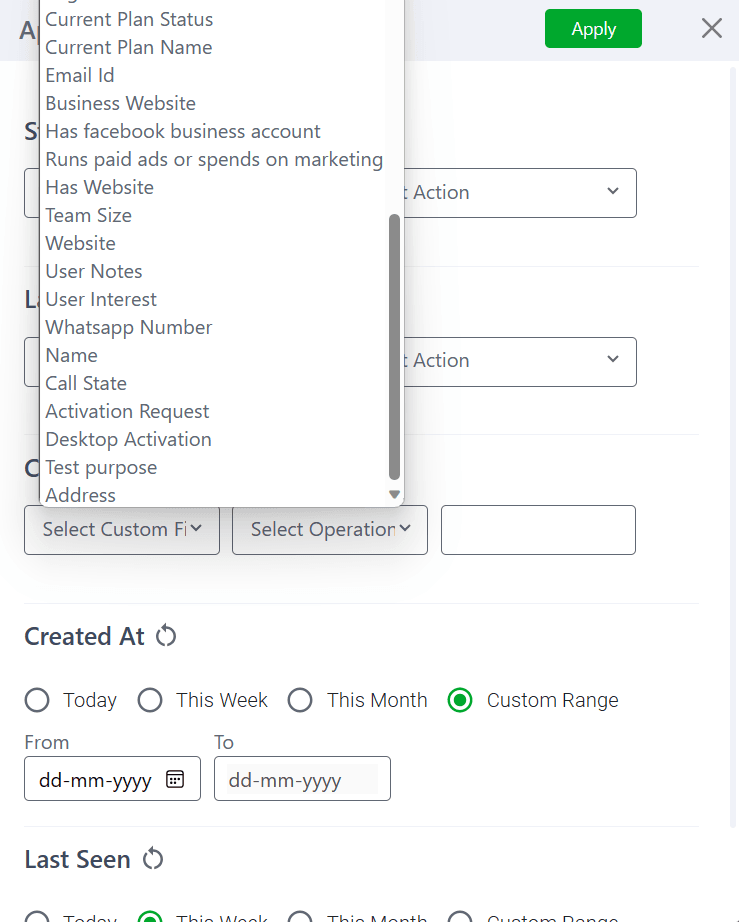WhatsApp Business Customer Segmentation: A Guide to Better Marketing ROI [2024]

Personalization is crucial for successful marketing, and WhatsApp remains as a useful asset to contact users on an individual level. Be that as it may, how could organizations use WhatsApp to amplify return for capital invested and limit client stir? The response lies in division — separating your crowd into more modest, designated gatherings, you can make messages that reverberate with explicit client needs and inclinations.
This guide investigates the idea of WhatsApp showcasing division, disclosing systems that both arising and laid out Web based business brands can utilize. Whether you're hoping to win back prone to-lose clients or intending to improve commitment through customized outreach, this thorough aide offers bits of knowledge and significant stages to raise your WhatsApp marketing game.
What is Segmentation in WhatsApp Marketing?

Segmentation in WhatsApp Marketing refers to the practice of dividing a target audience into distinct groups based on specific criteria such as demographics, behavior, or preferences. This strategy allows marketers to tailor their messages and content to different segments, ensuring a more personalized and relevant communication approach. In the context of WhatsApp, segmentation can involve categorizing users based on factors like location, age, buying history, or engagement level. By understanding the unique characteristics and needs of each segment, businesses can create more targeted and effective marketing campaigns, leading to higher engagement, improved customer satisfaction, and ultimately, increased conversion rates. Additionally, segmentation enables marketers to send messages at optimal times, ensuring that their content reaches the right audience when they are most likely to be receptive. Overall, segmentation plays a crucial role in maximizing the impact of WhatsApp marketing efforts and building stronger connections with customers.
Why is Segmentation Required?
Segmentation is crucial in targeting customers on WhatsApp or any other platform because it allows marketers to tailor their messages to specific groups with shared characteristics, preferences, and behaviors. Here are some key reasons why segmentation is required:
Relevance: Segmentation ensures that marketing messages are relevant to the recipients. By understanding the unique needs and interests of different segments, marketers can create content that resonates with each group, increasing the likelihood of engagement.
Personalization: Customers today expect personalized experiences. Segmentation enables marketers to customize their communication, addressing individuals based on their demographics, location, past interactions, or purchasing history. This personal touch fosters a stronger connection between the brand and the customer.
Improved Targeting: Not all customers have the same needs or respond to the same messaging. Segmentation allows marketers to identify high-potential target groups and allocate resources more efficiently. This leads to a higher return on investment as marketing efforts are focused on those most likely to convert.
Optimized Timing: Different segments may be active on WhatsApp at different times. Understanding the behaviors and preferences of each segment helps marketers schedule their messages for optimal impact, ensuring that the content reaches users when they are most receptive.
Enhanced Customer Experience: Segmentation contributes to a better overall customer experience by delivering content that is more aligned with individual preferences. This can lead to increased customer satisfaction, loyalty, and a positive brand perception.
Reduced Marketing Fatigue: Sending generic messages to an entire audience can lead to marketing fatigue, where customers become disinterested or annoyed. Segmentation helps prevent this by tailoring content to specific segments, preventing overexposure and irritation.
Data-Driven Decision-Making: Segmenting customers allows marketers to analyze data more effectively. By evaluating the performance of campaigns within each segment, marketers can make informed decisions on refining strategies for better results.
In brief, segmentation is essential for effective customer targeting as it enables marketers to deliver personalized, relevant messages, leading to higher engagement, improved customer satisfaction, and ultimately, greater success in their marketing efforts on WhatsApp or any other platform.
Strategies for Effective Use of Segmentation
Some strategies for the effective use of segmentation to target customers:
Define Clear Segmentation Criteria:
Clearly define the criteria for segmentation based on relevant factors such as demographics, behavior, location, or purchasing history. Ensure that the chosen criteria align with your business goals and provide meaningful distinctions among customer groups.Collect and Analyze Data:
Gather comprehensive data on your customers to inform your segmentation strategy. Leverage customer relationship management (CRM) systems, analytics tools, and other data sources to collect and analyze relevant information. Regularly update this data to keep your segmentation accurate and up to date.Create Detailed Customer Personas:
Develop detailed customer personas for each segment, outlining their characteristics, preferences, and behaviors. This helps humanize the target audience, making it easier to craft personalized and resonant messages for each group.Tailor Content and Messaging:
Customize your marketing content and messaging for each segment. This may include using different language, imagery, or promotional offers that specifically appeal to the unique needs and interests of each group. Ensure that your communication is relevant and valuable to each segment.Utilize Automation Tools:
Leverage marketing automation tools like WhatsTool Business which allows you to streamline the process of sending targeted messages to different segments. Automation can help schedule messages at optimal times, track customer interactions, and ensure consistent and timely communication across various segments.Implement A/B Testing:
Test different variations of your messages within each segment through A/B testing. This allows you to identify which content resonates best with specific groups, enabling you to refine your approach and improve the effectiveness of future campaigns.Consider Lifecycle Stages:
Take into account where customers are in their lifecycle with your brand. Implement segmentation strategies that consider factors such as new customers, loyal customers, or those at risk of churn. Tailor your messaging to address the unique needs of customers at each stage.Monitor and Iterate:
Regularly monitor the performance of your segmentation strategy. Analyze key metrics such as engagement rates, conversion rates, and customer satisfaction. Use this data to iterate and refine your segmentation strategy over time, ensuring it remains effective and aligned with evolving customer behaviors.Combine Segmentation Criteria:
Combine multiple segmentation criteria to create more refined and targeted segments. For example, combining demographic information with behavioral data can result in segments with highly specific characteristics, allowing for even more personalized marketing efforts.Adapt to Changes:
Customer behaviors and preferences evolve over time. Be adaptable and ready to adjust your segmentation strategy as needed. Regularly reassess your segmentation criteria to ensure they continue to align with the changing landscape of your customer base.
By implementing these strategies, businesses can leverage segmentation to its fullest potential.
How to Segment Your Customers Using WhatsTool Business?
WhatsTool Business provides you three ways to effectively segment your customers on the basis of:
1. Status Based

Segmentation based on the status of customer issues provides a structured approach to addressing and resolving concerns. By categorizing customer issues into segments such as "Issue Pending," "Issue Solved," and "Open Issue," businesses can allocate resources effectively. New complaints might require immediate attention and personalized responses, ongoing problems may necessitate continuous communication and updates, while resolved matters could benefit from follow-up to ensure customer satisfaction. This segmentation approach enables a targeted and streamlined customer support strategy, ensuring that the level of attention and resources dedicated to each segment aligns with the urgency and nature of the issue. It facilitates a more organized and efficient resolution process, leading to improved customer satisfaction and retention.
2. Label Based

Segmentation using the labels method is advantageous for effectively targeting potential buyers and optimizing retargeting efforts. By assigning specific labels or tags based on behaviors, preferences, and engagement, businesses can identify and isolate segments that exhibit high potential for conversion. Labels such as "active prospects," "cart abandoners," or "interested in promotions" enable precise targeting, allowing marketers to tailor retargeting strategies to the specific needs and characteristics of each segment. This approach enhances the relevance of retargeting messages, increasing the likelihood of capturing the attention of potential buyers. Additionally, the labels method aids in resource efficiency by directing retargeting efforts towards segments with the greatest likelihood of conversion, ultimately boosting sales and improving the overall effectiveness of marketing campaigns.
3. Custom Field Based

Segmentation using the custom field method proves invaluable for storing and organizing detailed customer information for future reference or specific requirements. By utilizing custom fields to capture unique data points such as customer preferences, purchase history, or specific interactions, businesses can create a comprehensive database tailored to their needs. This method ensures that customer details are easily accessible and can be segmented based on various criteria, streamlining targeted communication or personalized marketing efforts. Whether it's for launching tailored promotions, addressing specific customer needs, or conducting targeted surveys, the custom field method provides a structured and organized approach to managing customer data, enhancing customer relationships, and facilitating more informed decision-making based on individualized insights.